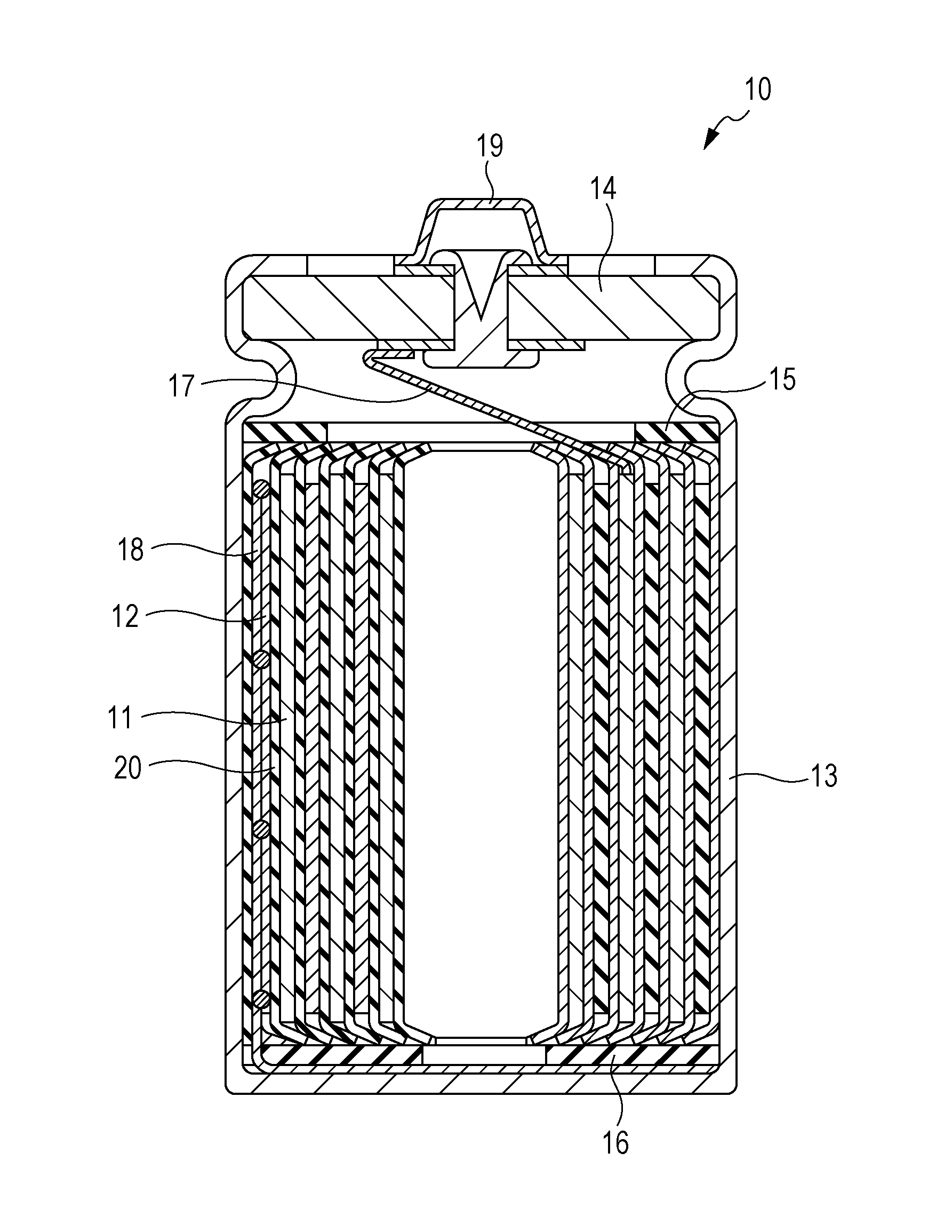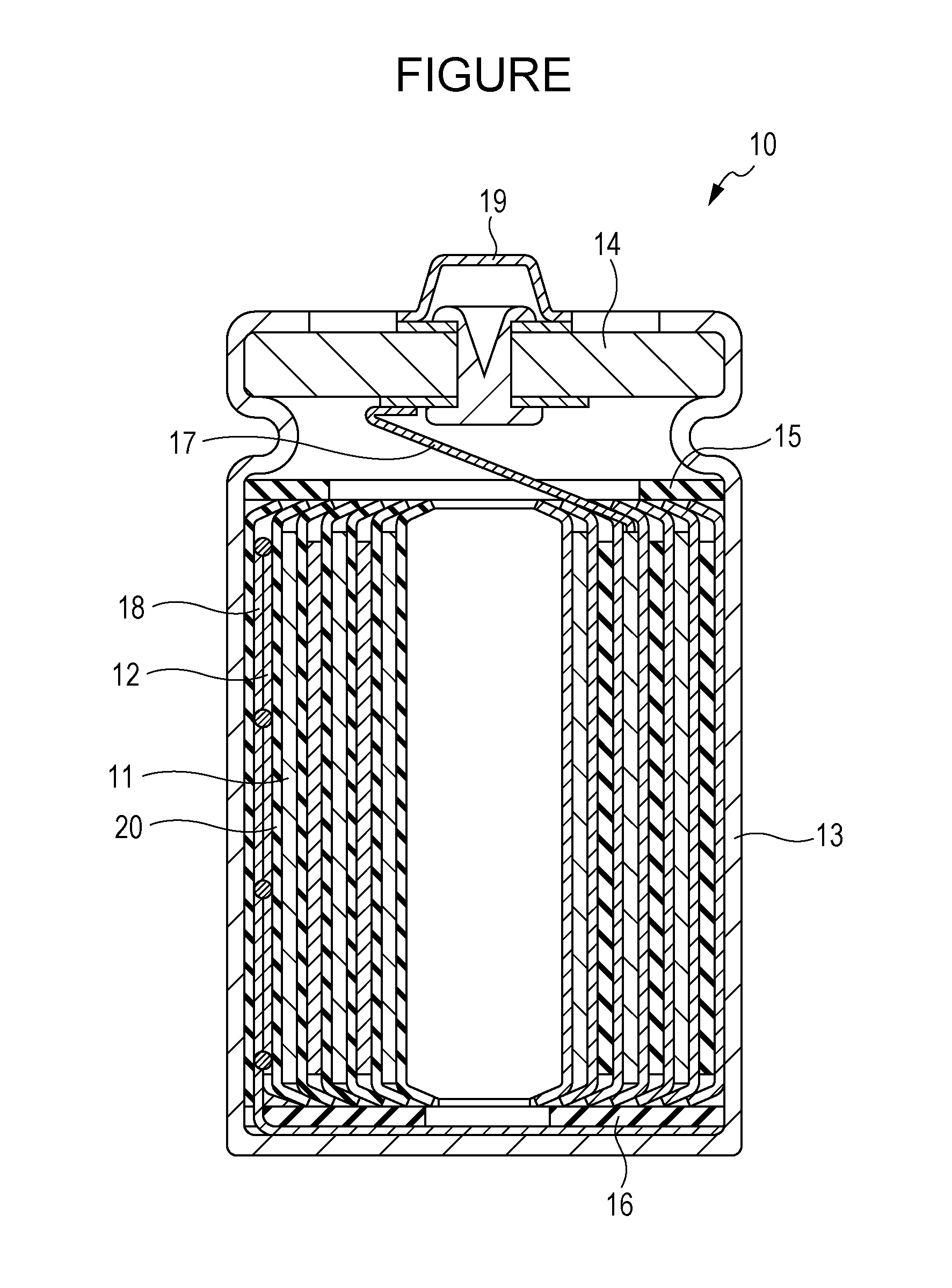Separator for nonaqueous electrolyte secondary battery and nonaqueous electrolyte secondary battery
a nonaqueous electrolyte and secondary battery technology, applied in the direction of electrical equipment, cell components, cell components, etc., can solve the problems of not having satisfactory air permeability of the separation device for aqueous electrolyte secondary battery, and achieve the effect of satisfying air permeability
- Summary
- Abstract
- Description
- Claims
- Application Information
AI Technical Summary
Benefits of technology
Problems solved by technology
Method used
Image
Examples
example 1
Production of Emulsion Containing Crosslinked Acrylic Resin Particles
[0052]Methyl acrylate (MA, 30 parts by mass), n-butyl acrylate (70 parts by mass), triethylene glycol diacrylate (3EGA: crosslinking agent, 10 parts by mass), acrylic acid (5 parts by mass), an anionic surfactant (5 parts by mass), and deionized water (100 parts by mass) were mixed with a homo-mixer to prepare a monomer emulsion. Deionized water (190 parts by mass) was charged in an autoclave purged with nitrogen and provided with a dropping device and a stirrer and was heated to 70° C. with stirring. An aqueous solution prepared by dissolving an aqueous ammonium persulfate solution (0.6 parts by mass) in deionized water (10 parts by mass) was then added to the deionized water. To this mixture was dropwise added the monomer emulsion prepared above over 4 hours with stirring while maintaining the temperature at 70° C. The stirring was further continued for 3 hours while maintaining the temperature to perform polymer...
example 2
[0055]A separator was produced as in Example 1 except that emulsion A-2 containing crosslinked acrylic resin particles was prepared using 0.5 parts by mass of acrylic acid in the preparation of the emulsion and was used.
example 3
[0056]A separator was produced as in Example 1 except that the amount of emulsion A-1 containing crosslinked acrylic resin particles used in the preparation of the cellulose fiber slurry was 1.2 parts by mass.
PUM
 Login to View More
Login to View More Abstract
Description
Claims
Application Information
 Login to View More
Login to View More - R&D
- Intellectual Property
- Life Sciences
- Materials
- Tech Scout
- Unparalleled Data Quality
- Higher Quality Content
- 60% Fewer Hallucinations
Browse by: Latest US Patents, China's latest patents, Technical Efficacy Thesaurus, Application Domain, Technology Topic, Popular Technical Reports.
© 2025 PatSnap. All rights reserved.Legal|Privacy policy|Modern Slavery Act Transparency Statement|Sitemap|About US| Contact US: help@patsnap.com


